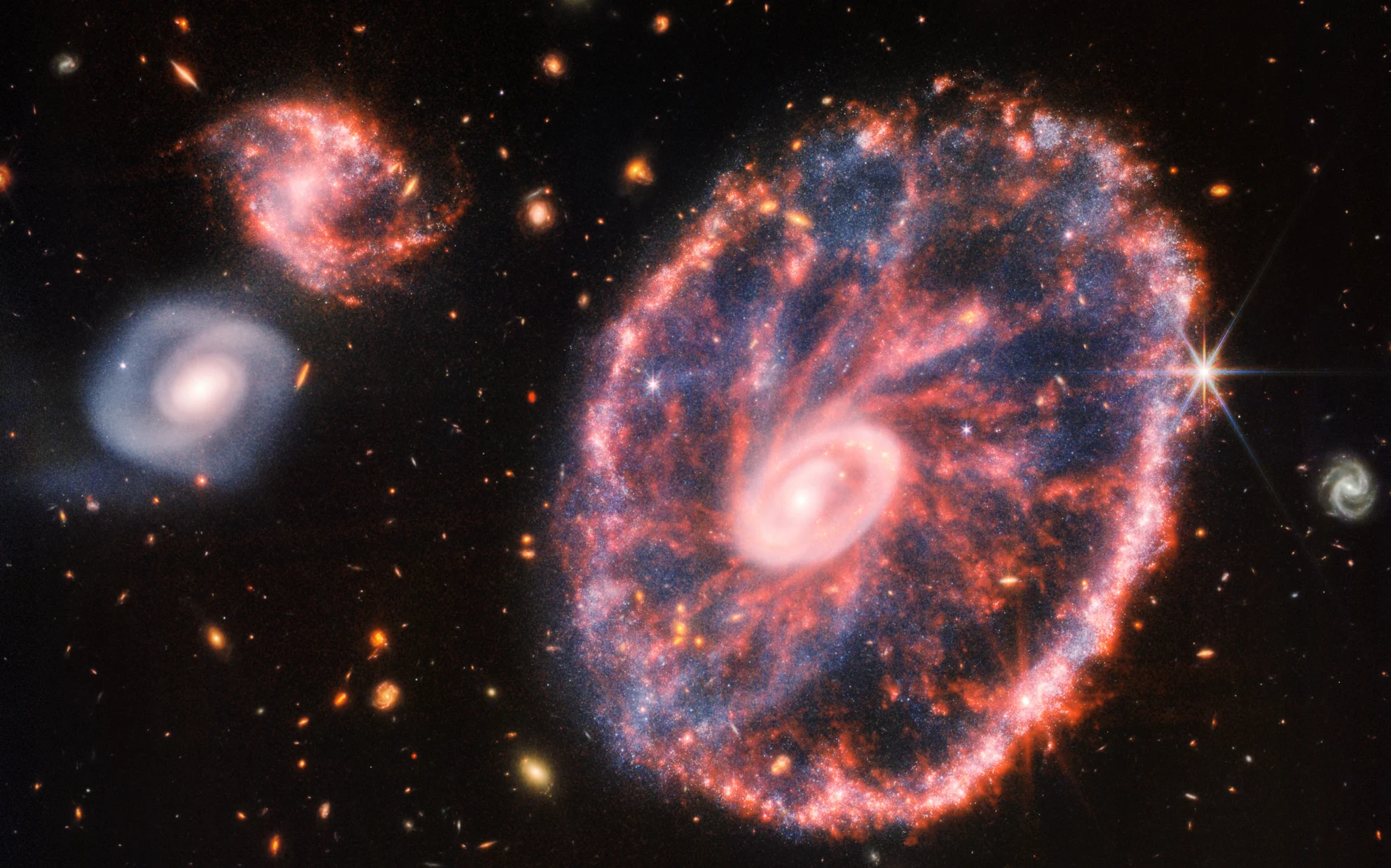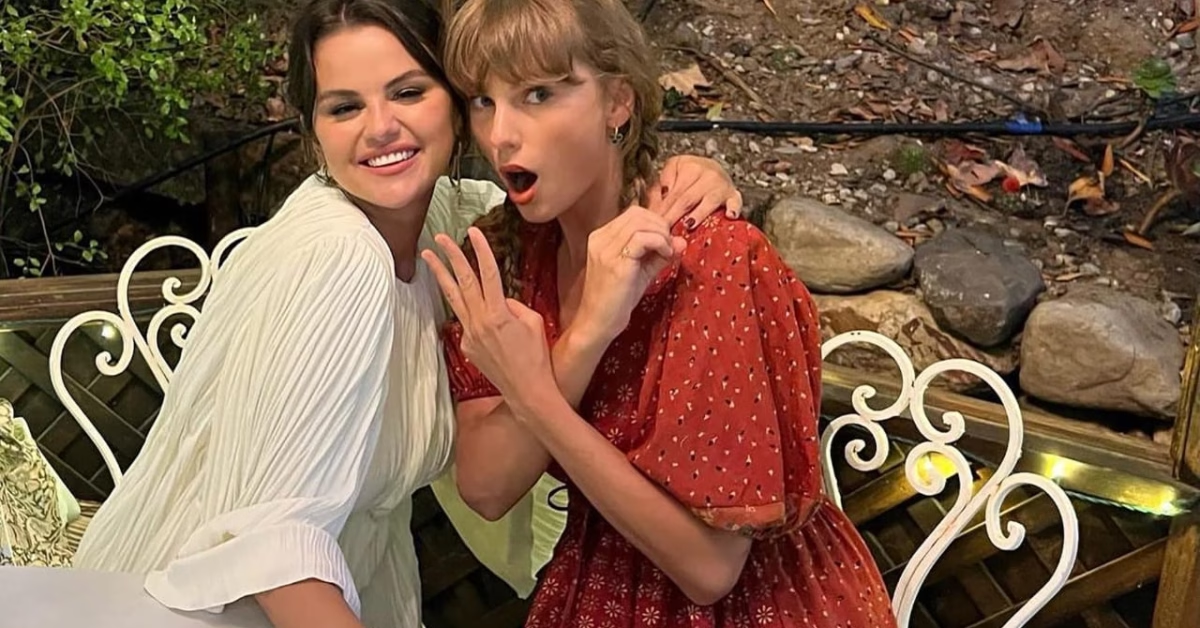According to NASA, the telescope has shed more insight on star – forming in the galaxy. NASA and its partners on the James Webb Space Telescope have published new photos from the observatory.
They gave a fresh glimpse at the Cartwheel Galaxy, which Hubble and other telescopes had previously spotted. According to NASA, JWST has revealed new details about star formation as well as the black hole at the centre of the galaxy, which is around 500 million light years away from Earth.
JWST was able to see through the dust that blocked the Cartwheel Galaxy from view when previous telescopes observed it by using infrared light detection.
The picture above is a combination of data from JWST’s Relatively close Camera (NIRCam) and Mid-Infrared Instrument (MIRI) (MIRI). Higher-resolution versions are available on the JWST website.
Data from the JWST’s primary imager, NIRCam, is coloured blue, orange, and yellow, while MIRI data is coloured red. According to NASA, the blue spots seen in the red swirls of dust are individual stars or regions of star development.
“NIRCam also reveals the difference between the smooth distribution or shape of the older star populations and dense dust in the core compared to the clumpy shapes associated with the younger star populations outside of it,”
the agency said.
Read Also: According to NASA, Climate Patterns Located Thousands of Miles Away Can Affect Bird Migration in the United States.
Meanwhile, MIRI was able to learn more about the galaxy’s dust. It discovered areas rich in hydrocarbons and other chemical components, as well as silicate dust, which is identical to much of the dust on Earth. These areas create numerous spiral spokes, leading to the Cartwheel Galaxy’s name.
The spokes were previously imaged by Hubble, but they are more sharper in the JWST data. NASA also supplied the following MIRI-only picture of the galaxy:
The Cartwheel Galaxy was generated by the collision of a massive spiral galaxy with a smaller one. It features two rings, one brilliant inside and one multicoloured outside. For over 440 million years, the outer ring has been growing from the collision’s centre.
According to NASA, the inside ring includes “a large volume of heated dust.” The brightest locations are home to massive young star clusters. Meanwhile, star formation and supernovae may be seen in the outer ring. Star formation happens as it expands and collides with surrounding gas.
Last month, NASA, the European Space Agency, the Canadian Space Agency, and the Space Telescope Science Institute released the first full-color photos from JWST. They included images of the Carina Nebula’s “Cosmic Cliffs” and stars in their early phases of development. Earendel, the universe’s most distant star, has also been discovered using the telescope.
While the JWST’s research activities are still in their early stages, it is already assisting scientists in developing a deeper knowledge of the universe – as well as giving some stunning photographs for the rest of us to view.











